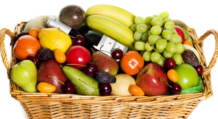|
Melissa Bess, former Nutrition and Health Education Specialist, Camden County, University of Missouri Extension
The Mediterranean diet is known for boosting health and lowering risk for chronic diseases like heart disease, high blood pressure and certain cancers. This should not be thought of as a temporary diet, but rather a lifestyle change for improved eating habits and better health. It can be easy to incorporate some components of the Mediterranean diet into your routine and now is the perfect time to start — May is Mediterranean Diet Month.
The Mediterranean diet is characterized by the emphasis on plant foods such as grains, vegetables and fruits. Olives, olive oil, nuts, beans, legumes, seeds and herbs/spices are also part of the Mediterranean eating style.
Grains should be mostly whole grains and can include whole wheat breads, whole wheat pasta, oats, brown rice, couscous, quinoa or barley, among others.
Fruits and vegetables can be fresh, frozen or canned. The nutrients are similar between the three different forms. Canned vegetables can have more sodium so rinse before using or buy lower sodium options. Fruits and vegetables can be cooked or eaten raw.
Olives and olive oil are staples of the Mediterranean eating style. Olive oil is the main source of fat and is used in cooking, as salad dressing, as a light drizzle on vegetables or as a dip for bread. Olive oil is higher in heart-healthy unsaturated fats and should replace saturated fats like butter or margarine.
Nuts, beans, legumes and seeds are the main sources of protein, healthy fats and fiber. Common beans include chickpeas (garbanzo beans), cannellini beans, kidney beans, lentils and black beans. Nuts are good as a snack, on a salad or added to other dishes.
Herbs and spices add flavor and aroma to foods. They reduce the need for salt and can be rich in health-promoting antioxidants.
Here are some ways you can incorporate Mediterranean eating into your lifestyle:
Homemade salad dressing recipe:
The Mediterranean lifestyle also recognizes the importance of being physically active, and enjoying meals with family and friends. |




